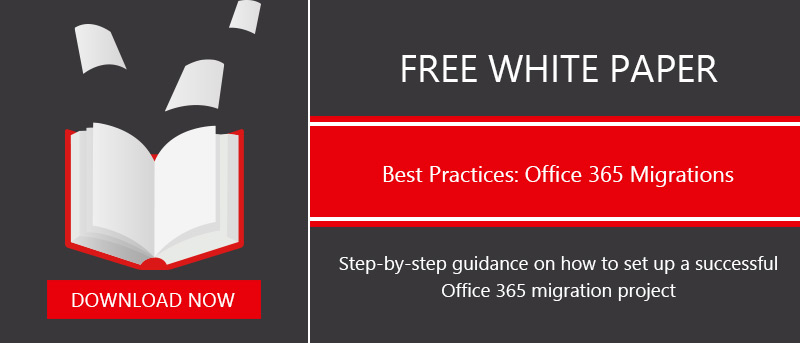If you didn’t already know that Microsoft provides a free Azure Blob Container to companies migrating to Office 365, now you know! But what exactly do you get with your free Azure Blob Container? And more importantly—how do you secure one for your migration?
Before you launch your Office 365 migration, here’s an overview of what exactly what these new storage containers are, their limitations and how to procure your own free storage.
What is the Free Azure Blob Container?
Essentially, Microsoft is offering a free Azure Blob Container for organizations using their new SharePoint Online Migration API to get to Office 365. This is a temporary Azure container that is created automatically when you execute migration jobs using the latest API. Once the data has been successfully ingested into the Office 365 tenant, the container is kept for data retention purposes for 14 days. Currently, the only way to take advantage of this new technology is by migrating to Office 365 through an independent software vendor (ISV) like AvePoint.
How exactly does this help my Office 365 migration?
 There are three clear reasons why Microsoft’s latest Office 365 migration incentive is especially appealing for companies on the fence: reduced migration cost, zero configuration storage units, and added security. Let’s take a deeper dive into those details below:
There are three clear reasons why Microsoft’s latest Office 365 migration incentive is especially appealing for companies on the fence: reduced migration cost, zero configuration storage units, and added security. Let’s take a deeper dive into those details below:
1. Reduced Office 365 Migration Cost: The phrase “Free Azure BLOB Container” is appealing in itself, but there are two important additional costs your business is spared:
- Azure Subscriptions and Storage Plans: While data in Office 365 can be hosted using separate cloud storage vendors, data can only be moved to Office 365 through Azure. With the free Azure Blob Container provided by Microsoft, organizations no longer need an Azure Subscription or Storage Plan to migrate to Office 365.
- Transactional Costs: Aside from the actual storage units, there is also a network of related costs to transmit data in and out of the Azure Blob Storage container(s) called “transactional costs.” Though these are only a few cents per transaction, when you are dealing with terabytes of data, those few pennies can add up quickly – causing additional costs to the overall migration project.
2. Zero Configuration Storage Units: The Azure container is available with no configuration needed. This is especially helpful for:
- Hybrid Organizations: Hybrid customers with on-premises infrastructure no longer need to obtain cloud storage in order to experience increased migration speeds to the cloud using the latest API.
- Organizations with non-Microsoft Office 365 Infrastructure as a Service (IaaS): For organizations with Office 365 subscriptions using a different cloud infrastructure vendor, co-existence is key. Though Azure is required when using the latest API, the new Microsoft provided Azure Blob Container will allow users to maintain their non-Azure cloud infrastructure while still leveraging the API to migrate to Office 365.
3. Added Office 365 Migration Security: One of the biggest hurdles any organization faces before and throughout the Office 365 migration process is the level of security around its data. With the Microsoft-provided Azure container, content will not only be encrypted during the packaging process but also during the transition from on premises to the container. Once the content is in the provided storage container, an additional layer of encryption is added to the data at rest.
How to Start your Office 365 Migration
These enhancements are important leaps from Microsoft to ease concerns of any organization looking to migrate to Office 365. Make sure you’re even more prepared by downloading a free copy of our “Best Practices for Office 365 Migrations” white paper!


